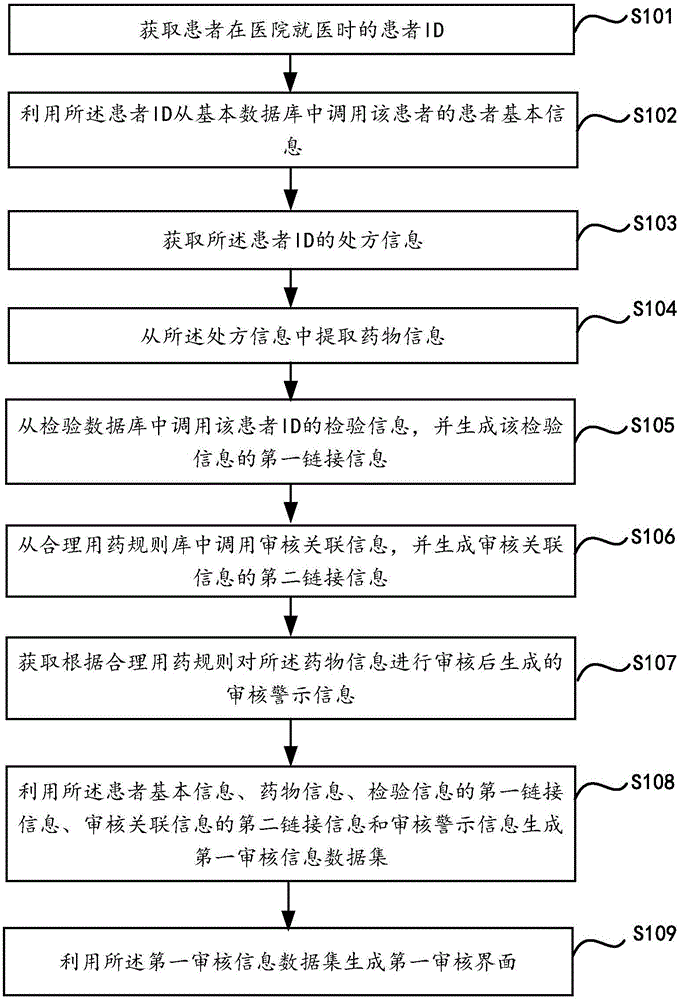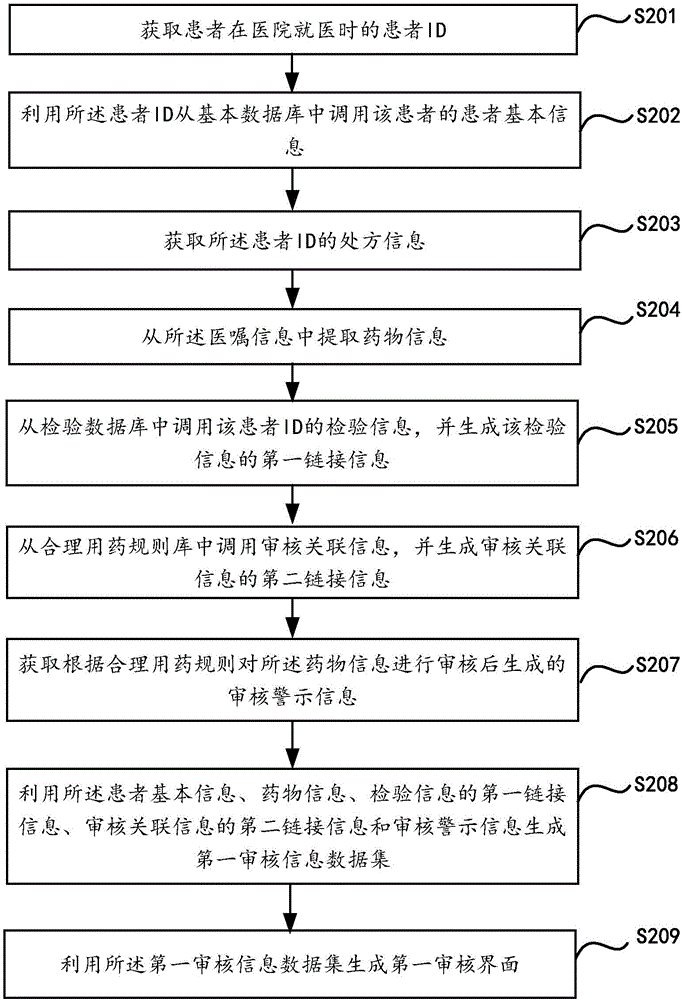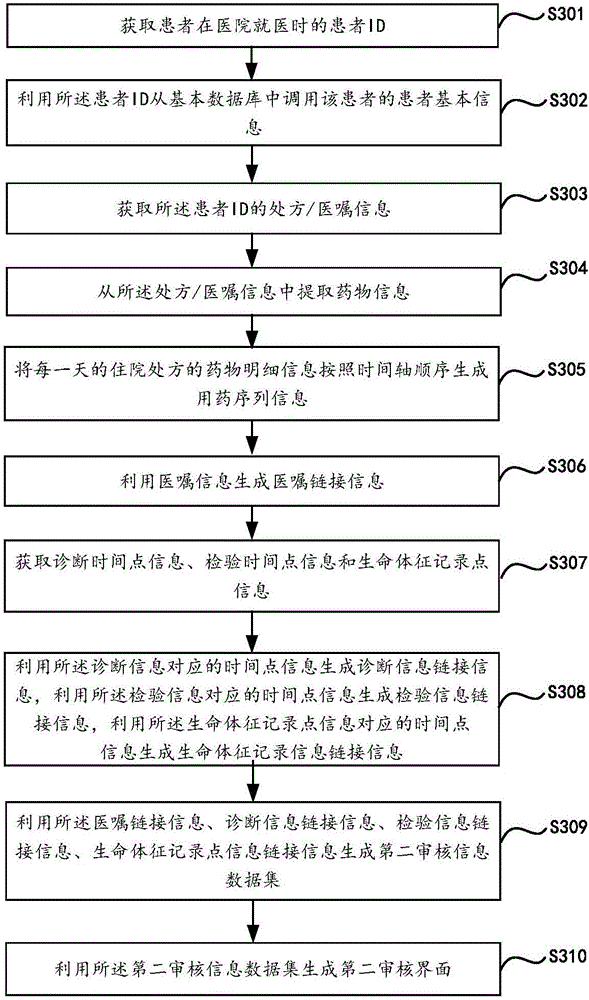Auditing interface generation method
A technology of interface and information generation, applied in the field of information processing, to achieve the effect of convenient, quick and reasonable display
- Summary
- Abstract
- Description
- Claims
- Application Information
AI Technical Summary
Problems solved by technology
Method used
Image
Examples
Embodiment Construction
[0035] The technical solutions of the present invention will be described in further detail below with reference to the accompanying drawings and embodiments.
[0036] Pharmacists need a concise, clear and convenient prescription review interface to review the suitability of prescriptions, and the generation of the review interface needs to obtain different information from various interfaces according to the requirements. Through the intuitive display of the first review information on the review interface, on the one hand It can avoid erroneous judgments caused by prescription review pharmacists' inconsiderate consideration, and more importantly, it can greatly improve the efficiency of prescription review pharmacists' review of prescriptions.
[0037] The method for generating the audit interface of the present invention is used to realize the generation of different audit interfaces to meet different audit requirements, and at the same time optimize the display content on t...
PUM
 Login to View More
Login to View More Abstract
Description
Claims
Application Information
 Login to View More
Login to View More - R&D
- Intellectual Property
- Life Sciences
- Materials
- Tech Scout
- Unparalleled Data Quality
- Higher Quality Content
- 60% Fewer Hallucinations
Browse by: Latest US Patents, China's latest patents, Technical Efficacy Thesaurus, Application Domain, Technology Topic, Popular Technical Reports.
© 2025 PatSnap. All rights reserved.Legal|Privacy policy|Modern Slavery Act Transparency Statement|Sitemap|About US| Contact US: help@patsnap.com



